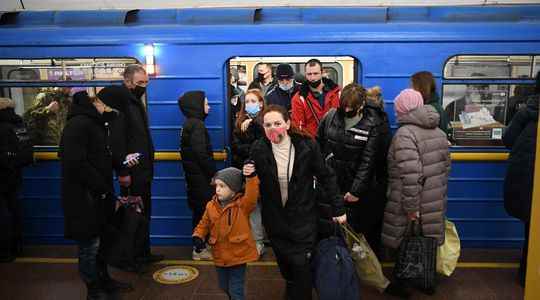Staged sabotage, supposedly crucified child, fake news accusing Ukrainians of the worst abuses is nothing new in Eastern Europe. In the current crisis, however, misinformation has increased sharply in the region. The spread of fake news and cyberattacks are indeed a popular way for the Kremlin to destabilize and demoralize the Ukrainian population. As Russia crossed a red line on the night of February 23-24, ordering bombings of Ukrainian territory and bringing in its troops from the east, Crimea and Belarus, it is likely that the campaigns of misinformation are still growing. Maria Avdeeva, research director of the European Expert Association, a think tank specializing in security issues and disinformation in Ukraine, answered questions from L’Express on February 23, the day before the launch of the Russian attacks.
What is the current situation in Ukraine?
We are currently targeted by new attacks. The increase in disinformation campaigns has been enormous for two weeks. It started when Russian troops massed at the border, but for the past two weeks, the scale of these actions has been much stronger. We are undergoing the most intense disinformation campaign ever seen here. It’s even more marked than what we saw in 2014.
What types of misinformation are circulating?
The aim is to make people believe that Ukraine is committing acts of aggression against the Donbass. Producing a lot of fake news gives Russia arguments to justify its military actions. All sorts of false information has been fabricated. For example, publications showed a car explosion and claimed that it was an operation by Ukraine against the Donetsk police chief. There has also been a lot of fake news around Ukrainian and Polish military groups allegedly attacking chemical plants. Telegram is widely used to spread this type of message. When downloading the videos, however, you can easily access the metadata and see when the image was “uploaded” and where. Analyzes show that these videos were recorded long before the day of the alleged attack and that the sound was added after. Russian officials have also shown images of destroyed buildings claiming that it was Ukraine’s doing, but all this information is fairly quickly denied, especially since many foreign media are present on the spot and see what it is actually happening.
Ukraine has suffered several cyberattacks in recent weeks. What is the strategy behind these attacks in your opinion?
The first cyberattack occurred in mid-January. It was an operation to deface websites. The hackers posted disturbing images and texts on Ukrainian government sites. Seventeen were targeted. All were quickly back on their feet, but we understood that this was a kind of test. The hackers probably wanted to assess how Ukraine would react and how quickly it would manage to do so. The second attack, a denial of service (DDoS) attack, targeted two major banks. The objective was undoubtedly to look for vulnerabilities and also to show that Russia had the capacity to carry out this type of operation. As this happened late in the evening, the impact was less, but panicked text messages were still sent to customers telling them to go and withdraw their savings immediately. And as we speak, we learn that the ministerial cabinet site is no longer responding (note: a new DDoS attack actually targeted Ukrainian government sites on February 23).
Do you fear more serious cyberattacks to come?
It is likely that major cyberattacks will be launched. One of the most risky targets is the telecommunications network. If attacks deprive Ukrainians of the ability to telephone or connect to the internet, this would obviously have serious consequences. Another threat concerns power plants. Russia has significant nuisance capabilities in the field, because there is a form of cooperation between Russian special services and groups of hackers. The authorities let them act from Russian soil if they agree to do so in their interests. In no democratic country, such proximity would exist between the State and cybercriminal groups.
